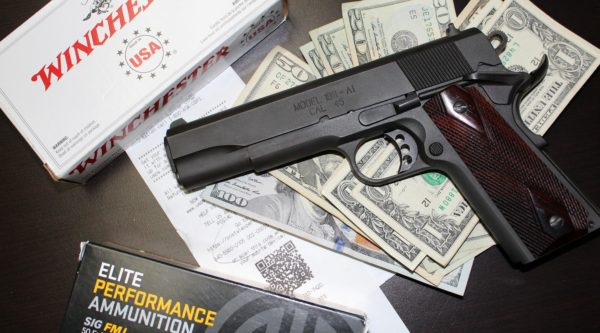
For the sixth year in a row, the now-infamous gun violence tax on firearms and ammunition in Seattle, Wash., has failed—in more ways than one—to live up to the hype surrounding its hasty adoption in the summer of 2015.
At that time, as reported in August 2015 by The Stranger, the office of chief tax proponent Tim Burgess predicted the tax of $25 on the retail sale of each firearm and 5 cents for each centerfire cartridge, and 2 cents on each rimfire cartridge would bring in between $300,000 and $500,000 annually.
Based on the new revenue figure for 2021, it was snake oil; a pig in a poke. Burgess is no longer on the council, but his then-colleague, who voted for the tax, was Bruce Harrell, who is now the mayor.
According to the City of Seattle, last year the tax collected $165,416. That is down from the highest point of $184,836 the city reported for 2020.
The city was sued successfully in 2016 by the editor of TheGunMag.com for refusing to provide revenue data under a Public Records Act request. A King County Superior Court judge ruled against the city. Since then, the city has been providing annual reports.
It was a First Amendment issue, which should have gotten lots of attention from Seattle news outlets
The gun tax revenue history has been disastrous, which is exactly what the Second Amendment Foundation and its sister organization, the Citizens Committee for the Right to Keep and Bear Arms predicted when the tax was first proposed. The tax was adopted ostensibly to create funding for “gun violence” reduction in the city, including homicides. On that level, the tax has also failed.
Homicides: During the first full year the tax was collected (2016), the city reported 18 homicides. That year, the city brought in $103,766. In 2017, Seattle recorded 28 murders and saw gun tax revenues plummet by $10,000 to a total of $93,220. The tax revenue for 2018 dropped to $77,518 as the city logged 32 slayings. In 2019, the gun tax brought in $85,352 and homicides dropped back to 28. In 2020 when the revenue spiked to $184,836, Seattle logged an alarming 52 killings, and last year’s body count seems to be in dispute, with the Seattle Police crime dashboard listing 40 homicides, while the non-department Twitter site Seattle Homicides says 43 people were killed.
Shots Fired: According to Seattle Police data, in 2016 there were 265 “shots fired,” of which 62 resulted in wounds and 11 were fatal. In 2017, there were 273 shots fired reports, 69 people were wounded and 18 were killed. The following year (2018) saw 233 shots fired, 67 people were wounded and 13 were killed by gunfire. In 2019, there were 235 shots fired reports, 79 wounded and 18 killed, and in 2020, there were 315 shots fired, 101 people were wounded and 21 were killed. Last year saw 438 shots fired reports, leaving 143 wounded and 31 killed.
So far this year, shots fired reports are up 55 percent over the same period in 2021, with 65 so far this year and 42 during the same period last year.
Back in 2015, when Seattle’s KIRO reported on the gun tax, Sergey Solyanik, owner of a then-Seattle-based gun shop called Precise Shooter warned the city council their scheme would push customers to shop outside the city.
“The only real purpose of this legislation is to run gun stores out of Seattle,” Solyanik said at the time.
Solyanik proved it by closing his Seattle store and moving to Lynnwood in neighboring Snohomish County, taking his Seattle customers—and their money—along.